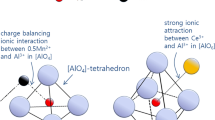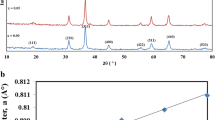Abstract
This study was aimed at characterizing paramagnetic properties of cokes formed on aluminas of different origin (calcined at 400 and 800°C) during catalytic reactions of hexafluoro-2-propanol decomposition and, for the sake of comparison, 2-propanol decomposition at 300 and 400°C. No significant differences in coke-forming activities were found between alumina obtained by hydrolysis of aluminium isopropoxide and that prepared by precipitation with ammonia from aluminium sulfate solution at pH 6.1, although they differed substantially in their acidity patterns. On the other hand, clear differences were observed between intensities of electron paramagnetic resonance (EPR) spectra recorded for samples covered with coke produced by reactions of the two alcohols. When hexafluoro-2-propanol was the parent substance, spectral lines were stronger and narrower than those obtained for 2-propanol. The smaller linewidth (ΔB pp=0.29-0.54 mT compared to ΔB pp=0.51-0.92 mT) was most likely a result of exchange interactions between electrons of paramagnetic centers, whose concentrations were higher in the carbonaceous deposit formed from fluorine-containing alcohol. Higher temperature of coke formation (400°C) resulted in higher intensities of EPR spectra, whereas higher temperature of alumina calcination (800°C), prior to its use in alcohol decomposition reaction, brought about lower spectral intensities.
Similar content being viewed by others
References
Fiedorow R., Przystajko W., Sopa M., Dalla Lana I.G.: J. Catal.68, 33–41 (1981)
Fiedorow R., Beszterda S., Przystajko W., Dalla Lana I.G.: Stud. Surf. Sci. Catal.55, 853–859 (1990)
Przystajko W., Fiedorow R., Dalla Lana I.G.: Appl. Catal.59, 129–140 (1990)
Fu L., Chuang K.T., Fiedorow R.: Stud. Surf. Sci. Catal.72, 33–41 (1992)
Zhang M., Zhou B., Chuang K.T.: Appl. Catal. B13, 123–130 (1997)
Fu L., Chuang K.T.: Energy Fuels3, 740–743 (1992)
Krawczyk A., Wojtowicz W., Więckowski A.B., Fiedorow R.: Mol. Phys. Rep.28, 69–73 (2000)
Przystajko W., Fiedorow R., Dalla Lana I.G.: Appl. Catal.15, 265–275 (1985)
Więckowski A.B., Wojtowicz W., Pilawa B.: Fuel79, 1137–1141 (2000)
Fialkov A.S., Tyan L.S., Mikhailov E.S., Khorkhorin A.V., Polyakova N.V.: Zh. Fiz. Khim.60, 1522–1524 (1986)
Yokomichi H., Hayashi T., Amano T., Masuda A.: J. Noncryst. Solids227–230, 641–644 (1998)
Yokomichi H., K. Morigaki K.: J. Noncryst. Solids266–269, 797–802 (2000)
Author information
Authors and Affiliations
Rights and permissions
About this article
Cite this article
Wojtowicz, W., Krawczyk, A., Więckowski, A.B. et al. EPR study of coke formed on alumina. Appl. Magn. Reson. 24, 343–349 (2003). https://doi.org/10.1007/BF03166935
Received:
Issue Date:
DOI: https://doi.org/10.1007/BF03166935




